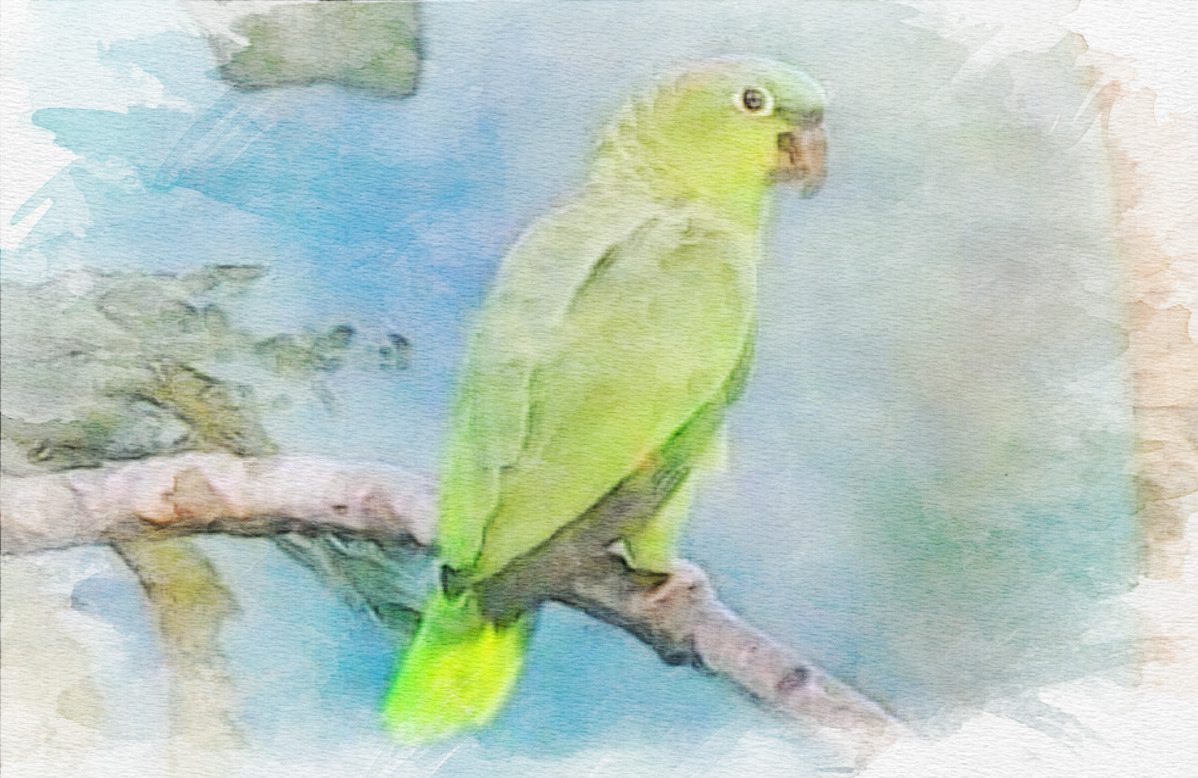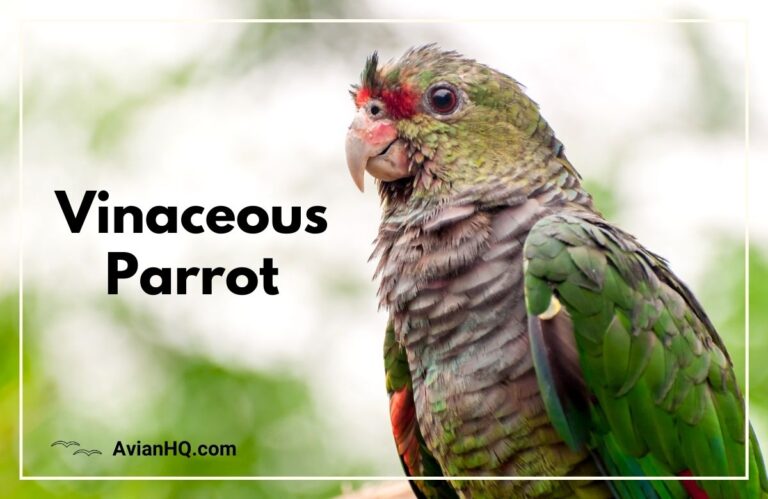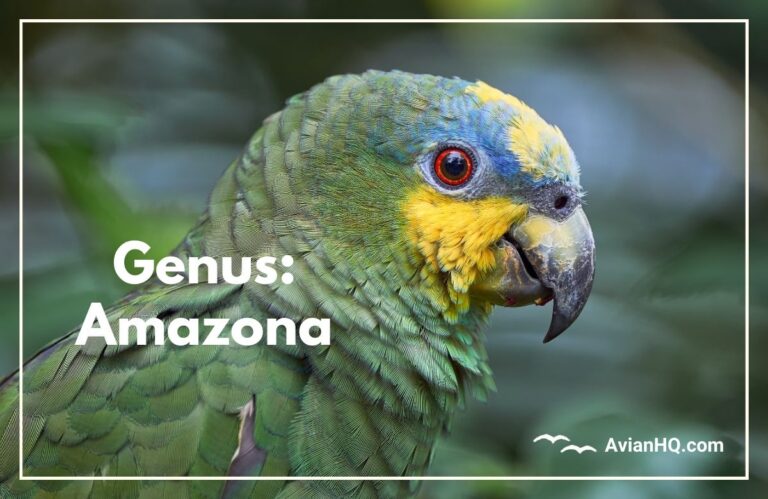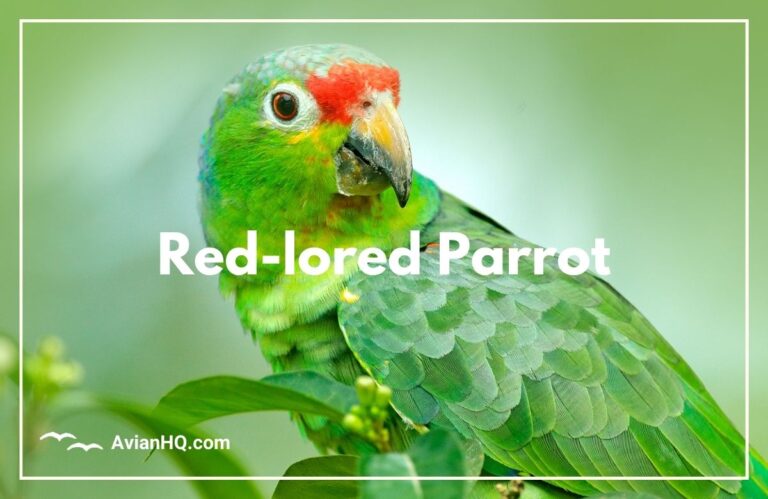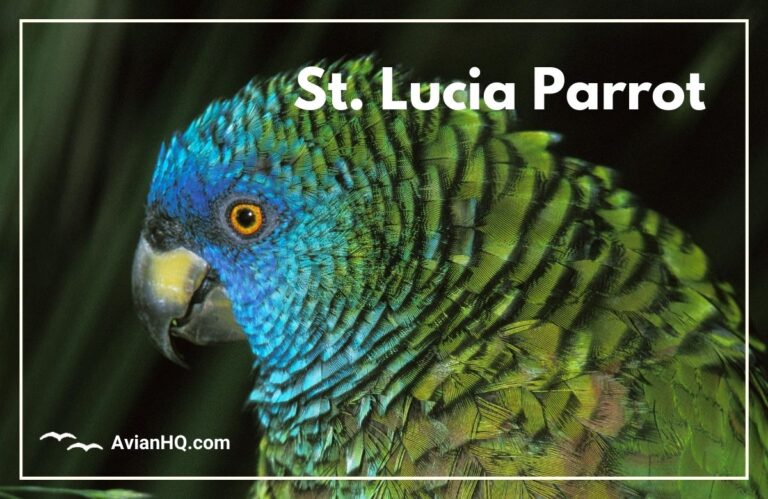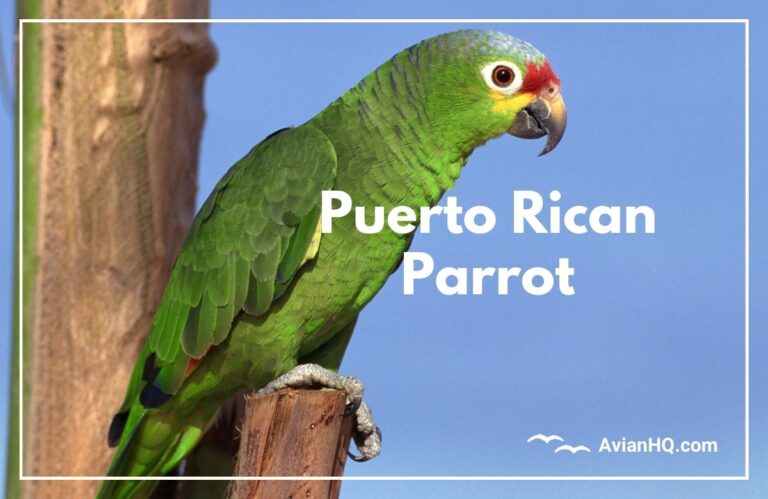Northern Mealy Amazon (Amazona guatemalae)
Have you ever seen a bright green parrot with a flour-dusted back soaring above the rainforest canopy? If so, you may have spotted the Northern Mealy Amazon, one of Central America’s most magnificent parrot species. These vibrant tropical birds stand out with their vivid green bodies and signature “mealy” gray wash on their napes and backs.
Spanning over 15 to 16 inches (38 to 41 cm) in length from head to tail, the Northern Mealy Amazon ranks among the bigger members of the diverse Amazona genus. Their sturdy builds, dense green feathers, and floury crowns equip them for life in Central America’s tropical rainforests. As highly social birds, they gather in chatty flocks or form long-term pairs to breed and roam their jungle homes.
Despite their large size and bright colors, these parrots remain relatively unstudied across parts of their range. Their preference for remote rainforest habitat keeps them out of sight from most human eyes. However, in recent decades, experts gained vital insight into the Northern Mealy Amazons’ uniqueness as a Central American endemic species.
Ongoing research and conservation efforts now strive to protect these birds as their forest homes face threats from deforestation and trapping for the pet trade. Read on to learn more about the natural history, relationships, and preservation of these captivating green parrots of the Neotropics.
History and Taxonomy
The Northern Mealy Amazon’s scientific journey traces back to the mid-1800s when British zoologist Philip Lutley Sclater first described the species in 1860. He collected a specimen from the Caribbean slopes of Guatemala and named it after it’s origin as Amazona guatemalae.
For decades afterwards, experts debated whether Northern Mealy Amazons justified recognition as a distinct species or belonged as a subspecies of the widespread Southern Mealy Amazon (Amazona farinosa). Both share extensive green plumage accented by vibrant red wing patches. However, the Northern Mealy Amazon exhibits subtle distinctive traits like a floury blue crown and smaller size reaching only 19 to 25 ounces (540 to 700 grams).
In 2012, a research team conducted genetic analyses confirming notable divergence between Central American and South American populations. Their results demonstrated that Northern Mealy Amazons breeding from Mexico to Panama evolved separately over thousands of years. Based on these findings, taxonomists split them as an endemic species, Amazona guatemalae.
This species includes two distinct subspecies across it’s range:
- A. g. guatemalae – Nominate subspecies occupying southeastern Mexico through northwestern Honduras
- A. g. virenticeps – Native to populations from northern Honduras to western Panama
Physical Appearance
As a predominately green parrot, the Northern Mealy Amazon bears rich emerald plumage across most of it’s body. It’s back and nape carry a signature pale “mealy” gray suffusion like a dusting of flour. The distal half of the tail presents lighter green-yellow tones as well.
In flight, these parrots reveal even more dazzling highlights:
- Bold red patches along the secondary wing feathers
- Deep blue trailing along the outer wing edges
- Yellow-green panels lining the bend of the wings
The nominate guatemalae subspecies exhibits the most vibrant blue hues across the crown, forehead, and around the eyes. The virenticeps subspecies shows reduced blue on the head and more extensive yellow-green on it’s wings.
In both forms, the eyes blaze a vibrant reddish-orange, encircled by prominent white eye rings. The stout bill ranges from dark gray to black in color. Juveniles resemble adults, but with notable brown irises until their first year molt.
On average, these stocky parrots reach 15 to 16 inches (38 to 41 cm) long from beak tip to tail tip. Their substantial builds allow them to tower over smaller Amazona parrots. Mature birds typically weigh between 19 to 25 ounces (540 to 700 grams).
Habitat and Distribution
The Northern Mealy Amazon resides primarily in lowland tropical rainforests across parts of Mexico and Central America. It’s native range extends from Veracruz, Mexico down along the Caribbean slopes through Guatemala, Belize, Nicaragua, and Western Panama.
These parrots frequent both wet and semi-humid forest habitats. You may encounter them along forest borders, adjacent to clearings, or on agricultural plantations with scattered tall trees. Northern Mealy Amazons occur primarily at lower elevations up to 3,600 feet (1,100 meters) in Panama’s subtropical highlands.
Their preference for intact rainforest ecosystems keeps Northern Mealy Amazons relatively localized and scarce across much of their territory. Deforestation threatens crucial breeding and foraging grounds for these birds.
Within their expansive Mesoamerican range, the two subspecies occupy different regions:
- A. g. guatemalae – Resident of southeastern Mexico through Honduras
- A. g. virenticeps – Native to populations ranging from northern Honduras to Panama
No introduced populations of Northern Mealy Amazons exist beyond their natural Central America distribution. Protecting their rainforest habitat remains vital for conservation of this tropical endemic species.
Diet and Feeding
The Northern Mealy Amazon forages across a diverse range of rainforest trees and vines to sustain it’s robust build. These parrots exhibit a primarily herbivorous, frugivorous diet rich in fruits, seeds, pods, and vegetation.
Wild flocks feed on offerings from forest giants like figs, tropical almonds, and leguminous plants. You may spot them plucking figs from emergent trees or extracting large hard seeds to crack open with their sturdy beaks. Their versatile diet includes:
- Fleshy fruits – figs, berries, some citrus
- Legume pods – inga, guama trees
- Palm nuts and hard seeds
- Flower buds and nectar
- Occasionally corn, crops at forest edge
This species lacks adaptations like the swift flight or slim shape of nectar specialists. But Northern Mealy Amazons still regularly visit flowers and lush blossoms. They play a mutual role dispersing seeds and pollinating rainforest plant species.
These highly social foragers gather in noisy flocks when rich food sources come into season. You might witness dozens swarming a fruiting tree. Outside breeding periods, huge communal roosts with hundreds of individuals may form. But while feeding, they blend into the green canopy virtually unseen. Their size and coloration provide remarkably camouflage against the leafy treetops.
Breeding and Reproduction
The breeding rituals of Northern Mealy Amazons revolve around their tight social bonds. After reaching sexual maturity at 4-5 years old, they select a monogamous mate for breeding. Seasonal courtship displays help strengthen the pair’s bond annually.
When the rainy spring season arrives, couples scope out suitable nesting grounds in forest trees. Northern Mealy Amazons exhibit cavity nesting behavior, relying on pre-existing hollows and holes rather than building elaborate nest structures. Competition for ideal sites is fierce.
Once choosing a nesting tree, the female deposits a small clutch of 3-4 white eggs. She settles in to incubate them for 24-27 days while the male regularly feeds her. After all eggs hatch, both parents devote themselves fully to raising and feeding the chicks.
The helpless young depend completely on their parents for survival initially. They grow quickly on regurgitated seeds and fruit from their attentive mother and father. After 9-10 weeks, the juvenile birds have matured enough to test out flying and leave the nest. However, family groups often stay together for an extended period as the fledglings continue developing.
Behavior and Ecology
The Northern Mealy Amazon thrives thanks to it’s dynamic social structures and adaptations for canopy living. These parrots congregate in small flocks or pairs while roaming their rainforest territories year-round.
You typically only hear their raucous squawks just before dusk or at dawn’s first light. But keep scanning the treetops, and you might glimpse 20 individuals mingling above. Northern Mealy Amazons even socialize with other parrot species like macaws when feeding or roosting.
Beyond breeding seasons, bigger aggregations emerge. Huge communal roosts form in the upper towers of emergent trees on the forest borders. Witnesses describe hundreds of green parrots packed onto every available perch vying for a spot to spend the night.
Come sunrise, the flocks disperse out to forage across the landscape. But you likely won’t spot them easily. The Northern Mealy Amazon’s predominantly green hues let it disappear against leafy branches. Only the flashes of crimson, yellow, and blue in it’s wings give it away in flight.
This expert camouflage helps the parrots safely browse rainforest vegetation. Their robust beaks and dexterous tongues are adapted for extracting seeds and opening tough fruits. And the Northern Mealy Amazon’s strong claws and wings allow it to cover expansive territory in the canopy stratum most birds can’t access.
Conservation Status
The extensive rainforest habitat required by Northern Mealy Amazons is under threat across Mexico and Central America. As their native forests vanish acre by acre, populations decline toward endangered levels.
The IUCN Red List currently categorizes the Northern Mealy Amazon as Near Threatened. But experts urgently call for expanded habitat protections and restrictions on trapping wild parrots for the pet trade.
Some major threats contributing to their worrying conservation status include:
- Widespread deforestation destroying nesting and feeding habitat
- Extensive legal and illegal trapping for the pet trade
- Unsustainable hunting for food in some regions
Exact wild population sizes are uncertain, but all regional surveys indicate Northern Mealy Amazons are decreasing. Their limited distributions and reliance on intact rainforests increase vulnerability. Without better safeguards, they could soon meet thresholds for an Endangered classification.
However, conservation groups are taking action for protecting these parrots. Sanctuaries across Central America rescue illegally traded birds and reputably breed them for release programs. And lobbying continues for increased legal protections for the species’ crucial forest ecosystems.
Preserving biodiverse rainforests ultimately holds the key to survival for the Northern Mealy Amazons and hundreds of other Central American animals. This vibrant green parrot serves as an important ambassador calling attention to these critical threatened habitats.
Conclusion
With their pale dusted napes and brilliant red-splashed wings, Northern Mealy Amazons rank among Central America’s most spectacular parrots. As endemic residents of the region’s lowland rainforests, they also serve as critical indicators of ecosystem health across Mexico, Guatemala, Belize, and Panama.
Their partially hidden lives feeding, breeding, and roosting in canopy havens still hold some mystery. But ongoing research continues to reveal fascinating insights into the natural history of Amazona guatemalae.
As deforestation and trapping take fatal tolls, time may run short for discovering more about this vulnerable species. Their conservation status will only improve through urgent actions to preserve crucial stretches of habitat and curb illegal pet trading.
You can join the effort by supporting nonprofits working to create protected areas and lobby for smarter environmental policies regionally. At home, be sure any pet birds were captive bred, not captured from fragile wild populations.
With robust interventions today, the “floury parrots” may continue flourishing for decades to come – delighting future generations with flashes of green, yellow and red soaring over Mexico’s Selva Lacandona or Panama’s Darién Gap. The rays of hope for this species shine as brightly as the sun glinting off their vibrant feathers.

